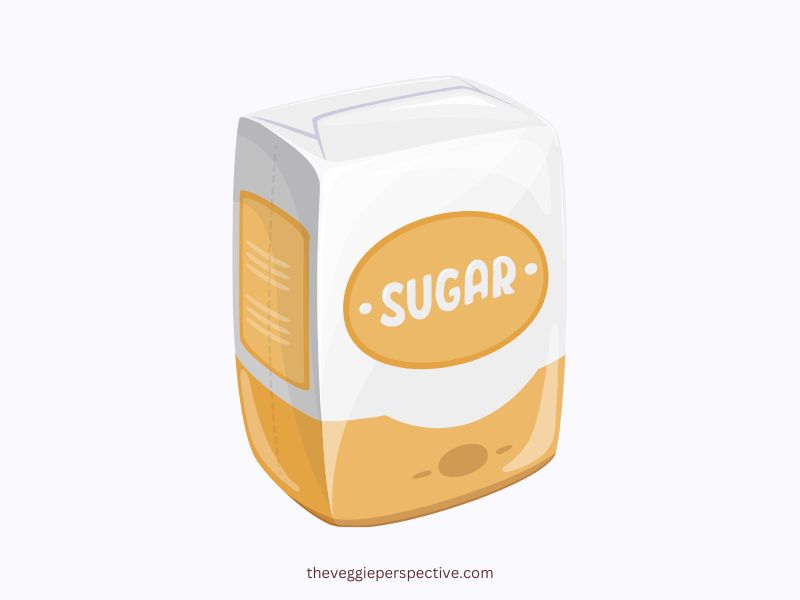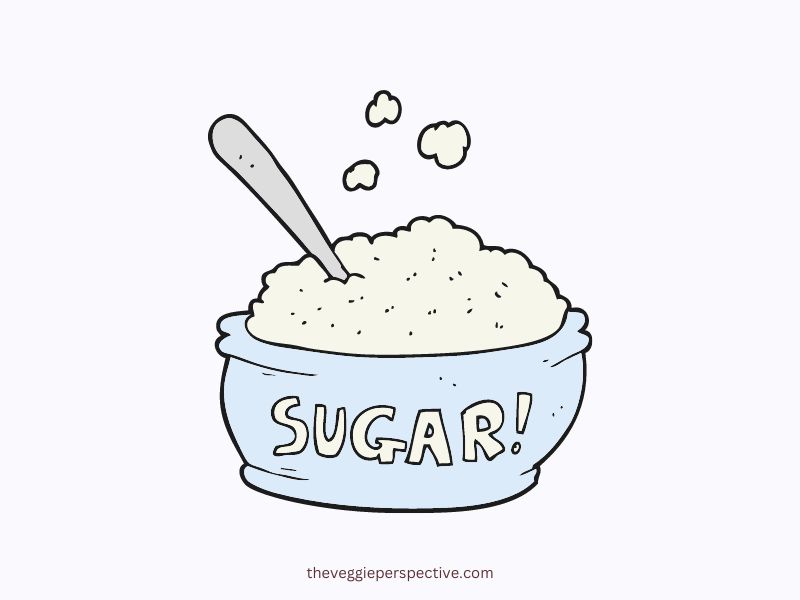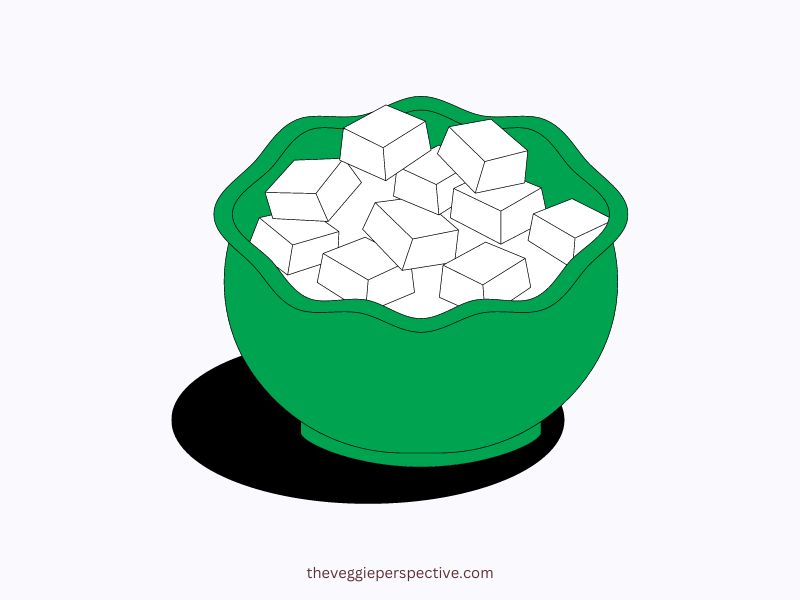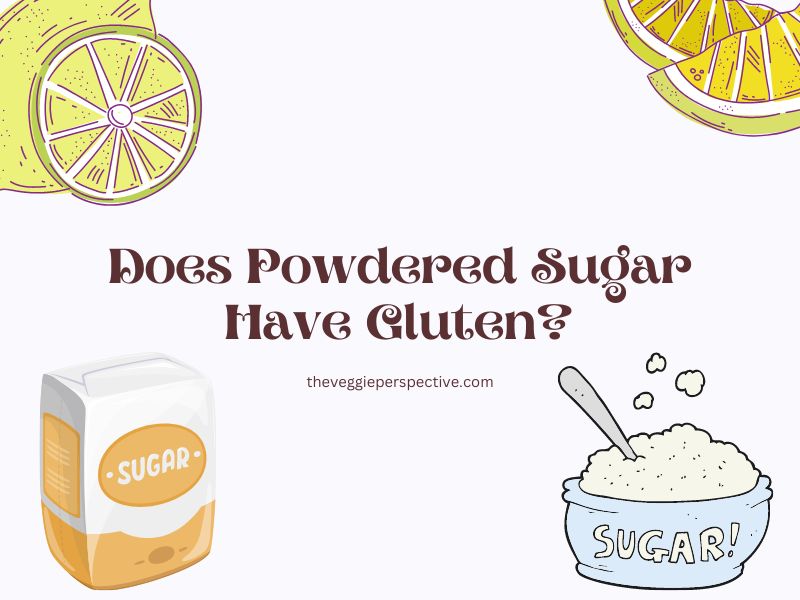Powdered sugar is a popular sweetener used in various recipes, and it’s essential to know if it contains gluten for people with celiac disease or gluten intolerance. Gluten is a protein found in wheat, barley, and rye, which triggers an immune response for people affected by gluten-related disorders.
The good news is that most brands of powdered sugar don’t contain gluten.
Powdered sugar is made by grinding granulated sugar into a fine powder and then mixing it with a small amount of cornstarch, which acts as an anti-caking agent. Cornstarch is gluten-free, so it won’t cause an allergic reaction in people with celiac disease or gluten intolerance.
- What is Powdered Sugar?
- Gluten and Its Sources
- Understanding Gluten-Free Products
- Manufacturing and Processing of Powdered Sugar
- Powdered Sugar and Gluten Contamination
- Gluten-Free Sugar vs. Gluten-Free Powdered Sugar
- Checking for Gluten-Free Powdered Sugar
- Making Your Own Gluten-Free Powdered Sugar
- Cooking and Baking with Powdered Sugar
- Tips for Avoiding Gluten Cross-Contamination
- My conclusion for all of this things…
- What is powdered sugar?
- Does powdered sugar have gluten?
- Can powdered sugar be considered gluten-free?
- How can I determine if powdered sugar is gluten-free?
- Are there alternative brands of powdered sugar that are gluten-free?
- Can I make powdered sugar at home to ensure it is gluten-free?
- Can powdered sugar be used in gluten-free recipes?
- Is it necessary to use powdered sugar in gluten-free baking?
- What other gluten-free sweeteners can I use instead of powdered sugar?
- Is it safe for individuals with gluten intolerance or celiac disease to consume powdered sugar?
However, it’s always important to check the ingredients list and the manufacturing process to ensure that powdered sugar is gluten-free.
What is Powdered Sugar?
Powdered sugar, also known as confectioners sugar or icing sugar, is a type of finely ground sugar that is commonly used in baking and cooking. It is made by pulverizing granulated sugar into a fine powder and then adding a small amount of cornstarch to prevent clumping.
One of the main uses of powdered sugar is in making frosting and glazes, as it dissolves quickly and produces a smooth texture. It is also often used for dusting baked goods such as cakes, cookies, and pastries to add a decorative finish.
Powdered sugar typically contains sugar and cornstarch, but depending on the brand, may also contain anti-caking agents or other additives. It usually comes in various degrees of fineness, with the most commonly found varieties being 10x and 4x.

Although powdered sugar is made from granulated sugar, some people may wonder if it contains gluten. The short answer is that pure powdered sugar should not contain gluten, however, cross-contamination during processing or added ingredients could potentially introduce gluten into the product. (It’s important to always check the label or contact the manufacturer if you have any concerns about gluten content).
Gluten and Its Sources
Gluten is a protein found in wheat, rye, and barley that gives elasticity to dough, helping it rise and keep its shape. It is also found in a wide range of processed foods as a binding agent, flavor enhancer, and stabilizer.
I’ve just finished writing an exceptional article that reveals the secrets of how long shrimp can be kept in the freezer. Don’t miss out on this valuable information. For individuals with celiac disease, consuming gluten can trigger an autoimmune response that damages the small intestine and leads to a range of symptoms, including bloating, cramping, diarrhea, and fatigue.
While it is relatively easy to avoid gluten-containing foods such as bread, pasta, and pastries, identifying gluten in other foods can be challenging. Here are a few common sources of gluten to watch out for:
- Baked goods: This includes cakes, cookies, muffins, and pastries that contain wheat flour.
- Sauces and gravies: Many processed sauces and gravies contain wheat flour as a thickening agent.
- Soups: Some canned and boxed soups may contain wheat flour as a thickening agent or contain barley.
- Beer: Beer is often made with barley, which contains gluten.
- Processed meats: Processed meats such as sausages, salami, and hot dogs may contain wheat flour or other gluten-containing ingredients.
- Condiments: Ketchup, soy sauce, and mayonnaise are examples of condiments that may contain wheat flour or other gluten-containing ingredients.
It’s important to read food labels carefully and be aware of the ingredients in packaged and processed foods to avoid consuming gluten unknowingly. If you have celiac disease or a gluten sensitivity, it’s recommended to consult with a healthcare professional or registered dietitian to develop a gluten-free eating plan and ensure you are receiving adequate nutrients. Oh, and speaking of almond milk, if you’re interested in knowing whether it has an alkaline pH, I recently penned an excellent article on the subject.
Understanding Gluten-Free Products
As more and more people adopt a gluten-free diet, it’s essential to understand what it means for a product to be labeled gluten-free. According to FDA guidelines, a product can be labeled as gluten-free if it contains less than 20 parts per million (ppm) of gluten. This standard has been set because it’s currently the lowest level that can be accurately detected with scientific testing methods.
Gluten is a protein found in wheat, barley, rye, and other grains. It can be a challenge to eliminate gluten entirely from a food product, which is why the 20 ppm threshold was chosen. However, it’s essential to note that people with severe gluten allergies or celiac disease may still experience adverse reactions to products containing even trace amounts of gluten.
While some products are naturally gluten-free, such as fruits and vegetables, other foods may contain gluten as an ingredient. It’s crucial to read the label carefully when purchasing pre-packaged foods to ensure they are gluten-free. Fortunately, many food manufacturers and restaurants are now offering gluten-free options, making it easier for consumers to identify and enjoy gluten-free products.
But, it’s also important to note that just because a product is gluten-free doesn’t necessarily mean it’s healthy.
Gluten-free substitutes for bread, pasta, and other wheat-based products can be made with ingredients such as rice flour, potato starch, and tapioca starch, which can be high in calories and carbohydrates. By the way, if you’re curious about the sodium content in ramen noodles, I’ve just written a fantastic article that you should definitely check out. Therefore, it’s essential to maintain a balanced and varied diet, even when following a gluten-free lifestyle.
| Powdered Sugar | May contain traces of gluten due to cross-contamination during manufacturing process. Check the label or contact the manufacturer for gluten-free certification. |
| Gluten-Free Powdered Sugar | Certified gluten-free, indicating that it is free from gluten and safe for individuals with gluten intolerance or celiac disease. Look for products with a gluten-free certification logo. |
| Homemade Powdered Sugar | Depends on the ingredients used to make the sugar. If the granulated sugar used is gluten-free, then the resulting powdered sugar will also be gluten-free. Always verify the source of the granulated sugar. |
Understanding what it means for a product to be labeled gluten-free is crucial for people following a gluten-free diet or those with gluten allergies. It’s important to read labels carefully and maintain a balanced diet that includes a variety of nutrient-dense foods.
Manufacturing and Processing of Powdered Sugar
Powdered sugar is a finely ground form of sugar that is commonly used in baking and confectionery. In the manufacturing process, granulated sugar is ground down into a fine powder and mixed with a small amount of cornstarch to prevent the sugar from clumping together.
The manufacturing of powdered sugar typically involves the following steps:
- Granulated sugar is first cleaned and washed to remove any impurities.
- The clean sugar is then dissolved in hot water to create a syrup.
- The syrup is then clarified to remove any remaining impurities.
- The clarified syrup is then filtered, evaporated, and dried to form small crystals.
- The sugar crystals are then ground down into a fine powder and mixed with cornstarch.
- The final product is packaged and sold as powdered sugar.
It’s also very important to note that most powdered sugar manufacturers use cornstarch as an anti-caking agent. Cornstarch is a gluten-free ingredient that is commonly used in the food industry to prevent the clumping of powders.
While powdered sugar itself does not contain gluten, there is a risk of cross-contamination during manufacturing and processing. This can occur if equipment used to process gluten-containing products is not properly cleaned before processing powdered sugar. Speaking of which, I recently published a fantastic article that reveals the number of calories in a peanut butter sandwich. It’s definitely worth a read if you’re interested.
To ensure that the powdered sugar you consume is gluten-free, it’s recommended to always check the label for any gluten-containing ingredients and to purchase from reputable manufacturers who adhere to strict cleaning and processing protocols.

Powdered Sugar and Gluten Contamination
Powdered sugar, also known as confectioner’s sugar, is a commonly used ingredient in baking, candy-making, and other food preparations. It is made by grinding granulated sugar into a fine powder and adding a small amount of cornstarch to prevent clumping.
While powdered sugar itself is gluten-free, there is a risk of gluten contamination during its manufacturing process, particularly if the sugar is processed in a facility that also handles wheat, barley, or rye. In some cases, manufacturers may use anti-caking agents that contain gluten, such as wheat starch, to prevent clumping.
To ensure that powdered sugar is gluten-free, it’s important to read all labels carefully and look for products that are labeled as gluten-free or have been certified by a reputable gluten-free certification organization. Additionally, it’s a good idea to contact the manufacturer and inquire about their manufacturing processes and cross-contamination prevention measures.
Consuming gluten-contaminated powdered sugar can cause adverse reactions in people with celiac disease or non-celiac gluten sensitivity. These reactions can include digestive issues, headaches, fatigue, joint pain, and other symptoms.
So, powdered sugar itself does not contain gluten, there is a risk of gluten contamination during its manufacturing process. It’s important to read labels, look for gluten-free certification, and contact manufacturers to ensure that the powdered sugar you’re using is safe for your specific dietary needs.
Gluten-Free Sugar vs. Gluten-Free Powdered Sugar
Before we dive in, it’s important to understand the difference between sugar and powdered sugar. Regular sugar, also known as granulated sugar, is made up of fine, individual sugar crystals. Powdered sugar, on the other hand, is a much finer powder and is often used for decorative purposes or to make a smooth icing or frosting.
Checking for Gluten-Free Powdered Sugar
When shopping you’re looking for gluten-free powdered sugar, the best place to start is by reading the label. Look for products that are labeled “gluten-free,” but keep in mind that this doesn’t always guarantee that the product is 100% free from gluten.
Be sure to check the ingredients list for any potential sources of gluten, such as wheat, barley, or rye. Some powdered sugars may also include “anti-caking agents,” which are used to prevent clumping but may contain gluten. Some common anti-caking agents to watch out for include:
- Modified food starch
- Cornstarch
- Tapioca starch
If you’re still uncertain whether a powdered sugar is gluten-free, consider reaching out to the manufacturer for more information.
Making Your Own Gluten-Free Powdered Sugar
If you’re unable to find a gluten-free powdered sugar at your local grocery store, you can always make your own at home. Simply combine regular granulated sugar and a small amount of cornstarch in a blender or food processor and blend until you have a fine powder. Be sure to use a gluten-free cornstarch to keep the final product free from gluten.
Finding gluten-free powdered sugar can be a challenge, but with a little label-reading and knowledge of ingredients, it’s possible to find or make your own gluten-free version. Remember to always read labels and reach out to manufacturers if you’re unsure about a product’s gluten content.
Cooking and Baking with Powdered Sugar
Powdered sugar, also known as confectioner’s sugar or icing sugar, is a finely ground sugar that is commonly used in desserts, frostings, and baked goods. It is often used as a dusting on top of cakes, cookies, and other sweet treats.
By cooking and baking with powdered sugar, it is important to note that although the sugar itself does not contain gluten, it can sometimes be mixed with ingredients that do contain gluten. For example, some brands of powdered sugar may contain cornstarch, which is often used as an anti-caking agent. If that cornstarch is made from wheat, then the powdered sugar would contain gluten.
With using powdered sugar in your recipes, it’s always a good idea to read the label to make sure that it does not contain wheat or other gluten-containing ingredients. When in doubt, choose a brand that explicitly states that it is gluten-free.
It’s also important to note to you, that although powdered sugar is generally gluten-free, the recipes in which it is used may not be. For example, a cake recipe that calls for a flour mixture containing wheat would still contain gluten, even if the frosting used powdered sugar.

To avoid any potential cross-contamination when using powdered sugar, it’s recommended to use a separate utensil for each ingredient. This will help prevent any gluten-containing ingredients from coming into contact with the powdered sugar and contaminating it.
Overall, my friend, using powdered sugar in your cooking and baking can be a great way to add sweetness and texture to your desserts. Just be sure to check the label and follow best practices to ensure that your recipes remain gluten-free.
For those who need to follow a gluten-free diet, baking can be a bit more challenging… But fortunately, there are alternative flour options that can be substituted for wheat flour in gluten-free baking. Here are a few options to consider:
Almond Flour
Almond flour is made by grinding blanched almonds to a fine meal. It’s naturally gluten-free, high in protein, and low in carbohydrates, making it a great alternative for those who need to follow a low-carb diet. Almond flour is commonly used in gluten-free baking for cakes, cookies, and muffins. Wait, I’ve got something interesting for you! If you’re wondering whether mushrooms can lead to gas, I recently wrote a fantastic article. Give it a read whenever you get the time.
Coconut Flour
Coconut flour is made from the dried and defatted meat of the coconut. It’s high in fiber, low in carbohydrates, and naturally gluten-free. Coconut flour is commonly used in gluten-free baking for bread, cakes, and cookies, but it absorbs more liquid than other flours, so recipes may need to be adjusted accordingly.
Buckwheat Flour
Despite the word “wheat” in its name, buckwheat is not related to wheat and is naturally gluten-free. Buckwheat flour is made by grinding the seed of the buckwheat plant and has a distinctive earthy flavor. It’s high in protein and fiber, making it a good choice for gluten-free baking recipes that require a heartier texture.
Quinoa Flour
Quinoa flour is made from ground quinoa seeds and is naturally gluten-free. It has a nutty flavor and is high in protein, making it a great option for gluten-free baking. Quinoa flour is commonly used in gluten-free bread, cakes, and muffins.
Rice Flour
Rice flour is made from ground rice and is naturally gluten-free. It comes in white or brown varieties and has a neutral flavor, making it a versatile option for gluten-free baking. Rice flour is commonly used in gluten-free bread, cakes, and noodles.
After all, there are many alternative flour options available for those on a gluten-free diet. Experimenting with these options can lead to delicious and satisfying gluten-free baked goods.
Here’s an interesting tidbit! I’ve written a fantastic article where I explore the sodium levels found in ramen noodles. You’ll be amazed by what I’ve uncovered.
Tips for Avoiding Gluten Cross-Contamination
When it comes to avoiding gluten cross-contamination, it’s important to be diligent and proactive in your approach. Here are some tips to help you prevent gluten from contaminating your powdered sugar and other foods:
Use separate utensils and equipment
To avoid cross-contamination, use different utensils, bowls, and cutting boards for gluten-free ingredients compared to gluten-containing ones. Don’t forget to also use different appliances such as blenders or mixers.
Keep your work area clean
Thoroughly clean your work area before beginning a recipe. Use hot water and soap to wash countertops, cutting boards, and utensils.
Opt for gluten-free brands
Some brands offer gluten-free powdered sugar, which is in a separate production line or plant. Be sure to check the label before purchasing powdered sugar from a new brand.
Store ingredients properly
Keep your powdered sugar and other gluten-free ingredients in tightly sealed containers to prevent cross-contamination.
Be cautious when dining out
Dining out presents a risk for gluten cross-contamination, as many restaurants may not have separate cooking areas or utensils for gluten-free options. Be sure to ask the server if they have gluten-free options and inquire about their gluten-free protocols.
Educate those around you
Educate your family and friends about gluten cross-contamination to help them understand the importance of using separate utensils or avoiding contaminating gluten-free ingredients.
By following these tips, you can reduce the risk of gluten cross-contamination and ensure that your powdered sugar and other gluten-free ingredients remain safe to consume.
My conclusion for all of this things…
Powdered sugar, also known as confectioners’ sugar or icing sugar, is typically made from just two ingredients: sugar and a small amount of cornstarch. Cornstarch is often added to prevent caking and improve the texture of the sugar.
Numerous studies have shown that cornstarch does not contain gluten, meaning that powdered sugar is generally considered gluten-free. However, it’s essential to check the ingredient list of the specific brand of powdered sugar to ensure that no gluten-containing ingredients have been added.
What is powdered sugar?
Powdered sugar, also known as confectioner’s sugar or icing sugar, is a finely ground form of sugar that is commonly used in baking and dessert recipes. It is often used to make icing or to dust over pastries, cakes, and other sweet treats.
Does powdered sugar have gluten?
Generally, powdered sugar does not contain gluten. The main ingredient in powdered sugar is granulated sugar, which is made from sugar cane or sugar beets. Gluten is a protein found in wheat, barley, and rye, and it is not typically added to powdered sugar during the manufacturing process.
Can powdered sugar be considered gluten-free?
In most cases, powdered sugar can be considered gluten-free. However, it’s important to note that cross-contamination can occur during processing or packaging, especially if the manufacturer also handles gluten-containing products. If you have celiac disease or a gluten sensitivity, it’s advisable to look for brands that explicitly label their powdered sugar as gluten-free.
How can I determine if powdered sugar is gluten-free?
To determine if powdered sugar is gluten-free, it’s best to read the product label carefully. Look for any indications or certifications that state the product is gluten-free. Additionally, you can contact the manufacturer directly to inquire about their production processes and if they have specific measures in place to prevent cross-contamination.
Are there alternative brands of powdered sugar that are gluten-free?
Yes, there are several brands of powdered sugar available in the market that specifically state they are gluten-free. These brands typically follow strict manufacturing practices to avoid cross-contamination. Look for products labeled as “gluten-free” or ones that carry certifications such as the Gluten-Free Certification Organization (GFCO) logo.
Can I make powdered sugar at home to ensure it is gluten-free?
Yes, you can make powdered sugar at home using regular granulated sugar. Simply place the granulated sugar in a blender or food processor and process until it turns into a fine powder. By making it at home, you have control over the ingredients and can ensure that it is gluten-free.
Can powdered sugar be used in gluten-free recipes?
Yes, powdered sugar can be safely used in gluten-free recipes. It is a common ingredient in many gluten-free baking and dessert recipes and can be used to make frostings, glazes, and decorative dustings on gluten-free treats.
Is it necessary to use powdered sugar in gluten-free baking?
While powdered sugar is commonly used in baking, it is not always necessary in gluten-free recipes. There are alternative sweeteners and thickeners available that can be used in place of powdered sugar. It ultimately depends on the specific recipe and the desired texture and taste.
What other gluten-free sweeteners can I use instead of powdered sugar?
If you prefer to avoid powdered sugar in your gluten-free recipes, you can consider using alternative sweeteners such as granulated sugar, coconut sugar, maple syrup, honey, or agave nectar. These sweeteners can provide similar sweetness but may have slightly different textures and flavors.
Is it safe for individuals with gluten intolerance or celiac disease to consume powdered sugar?
In general cases or situations, individuals with gluten intolerance or celiac disease can safely consume powdered sugar that is labeled as gluten-free. However, it’s essential to be cautious of potential cross-contamination and read product labels carefully. If you have severe gluten intolerance or celiac disease, it’s advisable to consult with a healthcare professional or a registered dietitian for personalized guidance
It’s also worth noting that cross-contamination during manufacturing or packaging could result in traces of gluten in the powdered sugar. People with celiac disease or gluten sensitivity should be vigilant when selecting powdered sugar, purchase from trusted manufacturers, and learn how to read labels carefully.
Without doubt, if you’re looking for a gluten-free alternative to granulated sugar for baking or decorating, powdered sugar is typically safe to use as long as it’s carefully checked for gluten-containing ingredients.
Stay safe! 🙂
I have always loved cooking and discovering new flavors. My hobby gradually grew into a serious hobby and now I write about food professionally on my blog. For almost a year now, I’ve been sharing my thoughts with the world and helping many people find their perfect “recipe” 🙂

